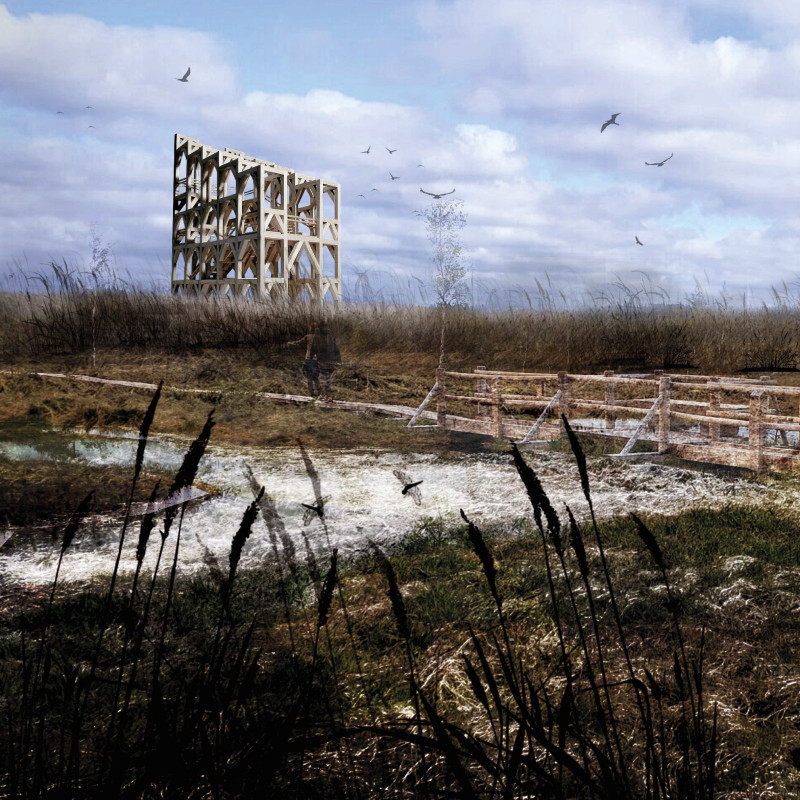5 key facts about this project
## Overview
The bird-watching observatory located in Pape Park, Latvia, is designed to enhance the visitor experience within a region known for its biodiversity. The structure serves as both an observation point for birdwatchers and a contemplative space for engagement with the surrounding environment. The project's intent focuses on facilitating a deeper appreciation of nature through architectural elements that prioritize visibility and interaction with the landscape. Elevated design ensures panoramic views of the wetland ecosystem while fostering an immersive sensory experience.
## Spatial Configuration and User Engagement
The observatory features a multi-level design that progressively ascends, offering varied spatial experiences across its three floors. The ground floor serves as a gathering area and educational hub, accommodating temporary exhibitions and providing a place for rest. The first floor, spanning 250 square meters, enhances visibility with 360-degree views of the landscape, allowing visitors to experience shifting light and shadow throughout the day. The second floor, though smaller at 90 square meters, amplifies the sense of height and openness, drawing users into the surrounding environment.
The interplay between open and enclosed spaces fosters visual connections between levels. This design approach encourages community interaction among visitors while maintaining a tranquil relationship with nature. As visitors ascend through the observatory, the stepped configuration enhances their sense of discovery.
## Material Selection and Sustainable Practices
Materiality plays a significant role in the observatory's design, with a primary focus on sustainability. Pine wood is the main structural material, selected for its local availability and ecological benefits, including carbon capture. Concrete forms the foundation, providing stability and further integration with the natural surroundings, while glass facilitates unobstructed views and a sense of openness. Natural stone at the base grounds the structure and provides tactile engagement for visitors.
Construction techniques prioritize traditional craftsmanship, employing methods like lap joints and mortise and tenon joints, which contribute to structural integrity and respect local building practices. The project's sustainability considerations include calculating the carbon footprint, with an emphasis on minimizing environmental impact through careful material use and design strategies that promote awareness and ecological responsibility among visitors.






















































